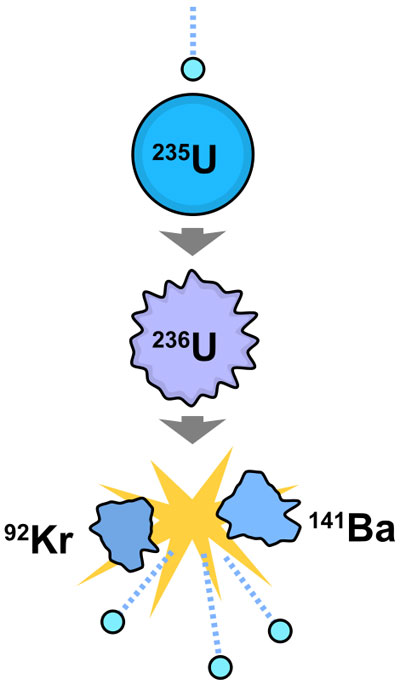
Source: Fastfission, Wikimedia commons
The word fission comes from a Latin term meaning "to split."
You may remember from Biology, that some bacteria reproduce through a process of binary fission. This means that the bacteria cell splits into two pieces.
Nuclear fission involves the nucleus of an atom splitting, instead of bacteria. When effectively hit with a neutron, a larger nucleus will split into two smaller ones of similar size.

Source: Fastfission, Wikimedia commons
![]() In the following nuclear fission animation you will see a neutron hit the nucleus of a uranium 235 atom atom.
In the following nuclear fission animation you will see a neutron hit the nucleus of a uranium 235 atom atom.
Source: Nuclear Fission Animated, FreeScienceLecture, YouTube
Nuclear fission reactions release an enormous amount of energy. This is the type of energy utilized by nuclear power plants.

![]() Watch the following video about how scientists developed the nuclear weapon and later realized how this energy can be used in energy production.
Watch the following video about how scientists developed the nuclear weapon and later realized how this energy can be used in energy production.
Source: Nuclear Reaction Fission, Teacher's Domain
In a nuclear power plant the nuclear fission reactions are controlled so the energy produced is released more slowly. Most of the energy produced is heat which is used to generate steam that drives a turbine producing electricity. Nuclear power plants cannot produce a nuclear explosion; however, the waste products formed are a hazard. Despite this problem, nuclear fission is currently used to produce a significant amount of usable energy.